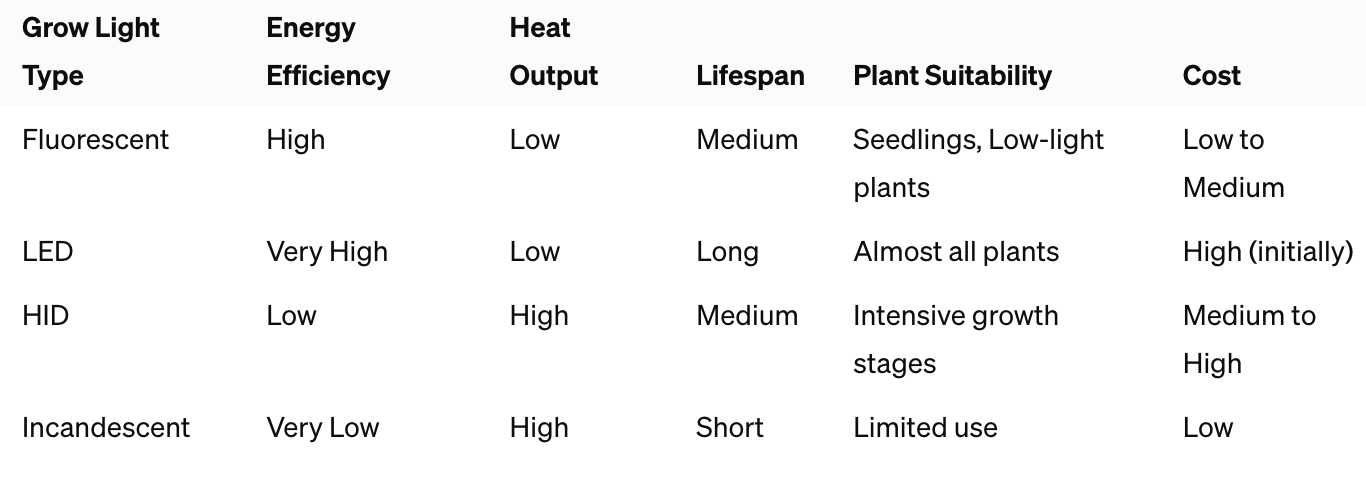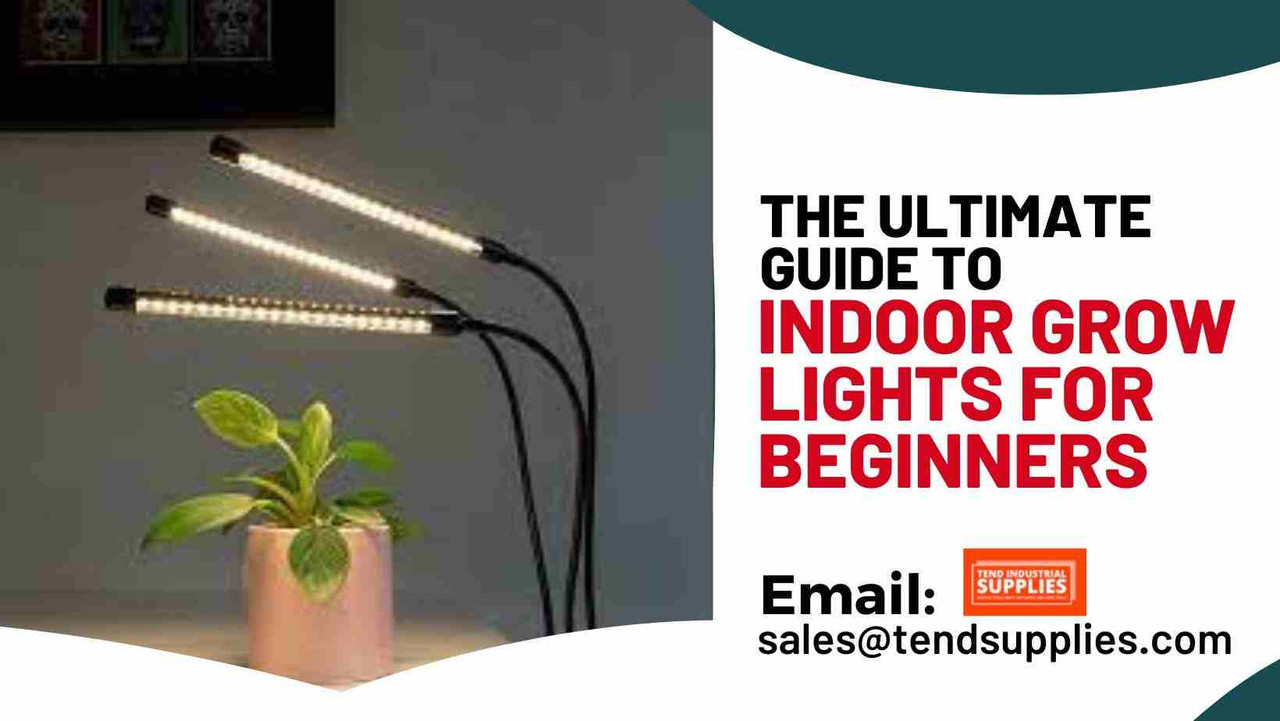The Ultimate Guide to Indoor Grow Lights for Beginners
Welcome to the world of indoor gardening, where the sun never sets, and your plants thrive under the tender glow of grow lights. In the absence of natural sunlight, grow lights serve as the lifeline for indoor plants, ensuring they receive the necessary spectrum of light to photosynthesize, grow, and flourish. Understanding the various types of grow lights available is crucial for beginners venturing into this green indoor oasis. Each type brings its unique benefits to the table, catering to the diverse needs of indoor plants. This guide aims to illuminate the path for novices, providing a comprehensive overview of indoor grow lights and their significance in the art of gardening indoors.
Why Use Indoor Grow Lights?
Grow lights aren't just a substitute for sunlight but a versatile tool that enhances plant growth, development, and yield. Here's why they're indispensable in indoor gardening:
- Optimized Growth: Indoor grow lights are designed to emit the perfect light spectrum for plant photosynthesis. They ensure your plants receive the right light, regardless of seasonal changes or weather conditions.
- Year-round Harvest: With grow lights, seasons are a thing of the past. You can grow your favorite fruits, vegetables, and flowers throughout the year, bypassing Mother Nature's limitations.
- Space and Efficiency: Only some have the luxury of a garden or sufficient window space. Grow lights enable gardening in the smallest of apartments, maximizing space and efficiency.
Types of Indoor Grow Lights
Navigating through the types of grow lights can be overwhelming for beginners. Let's highlight the most popular types, highlighting their features and suitability for novice gardeners.
Fluorescent Grow Lights
Fluorescent lights, such as T5, T8, and Compact Fluorescent Lamps (CFLs), are a great starting point for beginners. They're energy-efficient, produce minimal heat, and are perfect for growing herbs, lettuce, and other small plants. However, there might be better choices for light-hungry plants like tomatoes.
Pros:
- Energy-efficient
- Low heat output
- Ideal for seedlings and low-light plants
Cons:
- Not suitable for larger plants requiring intense light
- Bulbs require regular replacement
LED Grow Lights
LEDs are at the forefront of grow light technology, favored for their energy efficiency and longevity. They emit light in the specific spectrums needed for photosynthesis, making them ideal for many plants. Plus, they're cool to the touch, reducing the risk of heat damage.
Pros:
- Highly energy-efficient
- Long lifespan
- Low heat emission
- Versatile (suitable for almost all plants)
Cons:
- Higher initial cost (though long-term savings offset this)
High-Intensity Discharge (HID) Lights
HID lights, including Metal Halide (MH) and High-Pressure Sodium (HPS) lamps, are potent options that mimic natural sunlight. MH lights are great for vegetative growth, while HPS lamps are better for flowering and fruiting. However, their high heat output and energy consumption make them less ideal for beginners.
Pros:
- High light intensity
- Effective for all growth stages
Cons:
- High heat output
- Higher energy consumption
- Requires additional equipment (ballasts, reflectors)
Incandescent Lights
Incandescent lights are the least suitable for indoor gardening, primarily used for houseplants or as supplementary lighting. Their inefficiency and high heat output outweigh any potential benefits for severe indoor gardeners.
Why They're Not Recommended for Beginners:
- Inefficient
- High heat output
- Limited utility in gardening
As we explore selecting the right grow light for your indoor garden, setting it up for optimal growth, and maintaining it for durability, remember that the journey into indoor gardening is a personal one. What works for one may not work for another, but with the right knowledge and tools, you can find the perfect lighting solution for your green oasis.
How to Choose the Right Grow Light for Your Indoor Garden
Selecting the perfect grow light involves more than just picking one off the shelf. It requires understanding your garden's specific needs. Here's how to make an informed decision:
- Assess Plant Types and Growth Stages: Different plants have varying light requirements. Leafy greens may thrive under fluorescent lights, while fruit-bearing plants might need the intensity of HID or LED lights.
- Consider Your Space: The size of your garden will dictate the light needed. Larger areas may require multiple lights or ones with higher output.
- Energy Efficiency and Heat Output: To keep running costs low and avoid heat stress on your plants, opt for lights that balance energy efficiency and low heat output, such as LEDs.
Setting Up Your Indoor Grow Lights
Setting up your grow lights correctly can significantly impact your garden's success. Here are some tips to get you started:
- Proper Placement: Lights should be placed directly above your plants at the recommended distance to ensure even light coverage and prevent stretching or burn.
- Timing is Everything: Use timers to mimic natural day/night cycles. Most plants thrive with 14-16 hours of light per day.
- Adjust as They Grow: Raise your lights as your plants grow to maintain the proper distance and avoid light burn.
Care and Maintenance of Grow Lights
To ensure your grow lights perform optimally and last as long as possible, regular maintenance is key:
- Clean Regularly: Dust and dirt can reduce light efficiency. Clean your bulbs and fixtures regularly with a dry cloth.
- Check for Wear and Tear: Inspect cords and bulbs for damage. Replace any faulty components immediately to prevent accidents.
- Follow Manufacturer's Guidelines: Each type of grow light has specific maintenance requirements. Adhering to these will prolong the life of your lights.
The Economic Benefits of Grow Lights
Investing in grow lights can have long-term economic benefits:
- Reduce Grocery Bills: Growing your own fruits, vegetables, and herbs can significantly reduce grocery expenses.
- Longevity and Efficiency: though initially more expensive, LED grow lights save money in the long run due to their low energy consumption and long lifespan.
- Increased Yield: Proper lighting can improve plant yield, providing more produce over the same period than traditional gardening.
Summary Chart of the Glow Lights

Conclusion
Embarking on the indoor gardening journey with the right grow lights can transform your space into a lush, productive haven. Remember, the best grow light is the one that suits your garden's specific needs. Experimenting with different types and setups can help you discover what works best, bringing you one step closer to harvesting the fruits (and vegetables) of your labor.
As you cultivate your green thumb, remember that resources like Tend Industrial Supplies are available. They offer a range of grow lights and expert advice to help your indoor garden thrive. For inquiries or assistance, don't hesitate to reach out at sales@tendsupplies.com.
Frequently Asked Questions (FAQ)
1. Can I use regular LED bulbs as grow lights?
While regular LED bulbs can support plant growth to some extent, they lack the full spectrum of light that specialized grow lights provide, which is essential for optimal plant development.
2. How often should I replace my grow lights?
Grow lights' lifespans vary by type. LEDs can last for several years, while fluorescent bulbs may need replacement every year or two. Always monitor your plants' health and growth for signs that your lights may be diminishing in effectiveness.
3. Can grow lights cause harm to my plants?
If placed too close or used excessively, grow lights can burn plants. It's crucial to follow recommended distances and lighting schedules.
4. Are grow lights expensive to run?
The cost depends on the type of light and how often it's used. LEDs are the most energy-efficient and cost-effective over time.
5. Do I need special equipment to install grow lights?
While some lights require specific fixtures or ballasts, many grow lights designed for beginners are plug-and-play and require minimal setup.
Embarking on your indoor gardening adventure can be a fulfilling and productive hobby. Your indoor garden will flourish with the right grow lights and care, providing fresh produce and a beautiful green space year-round.



